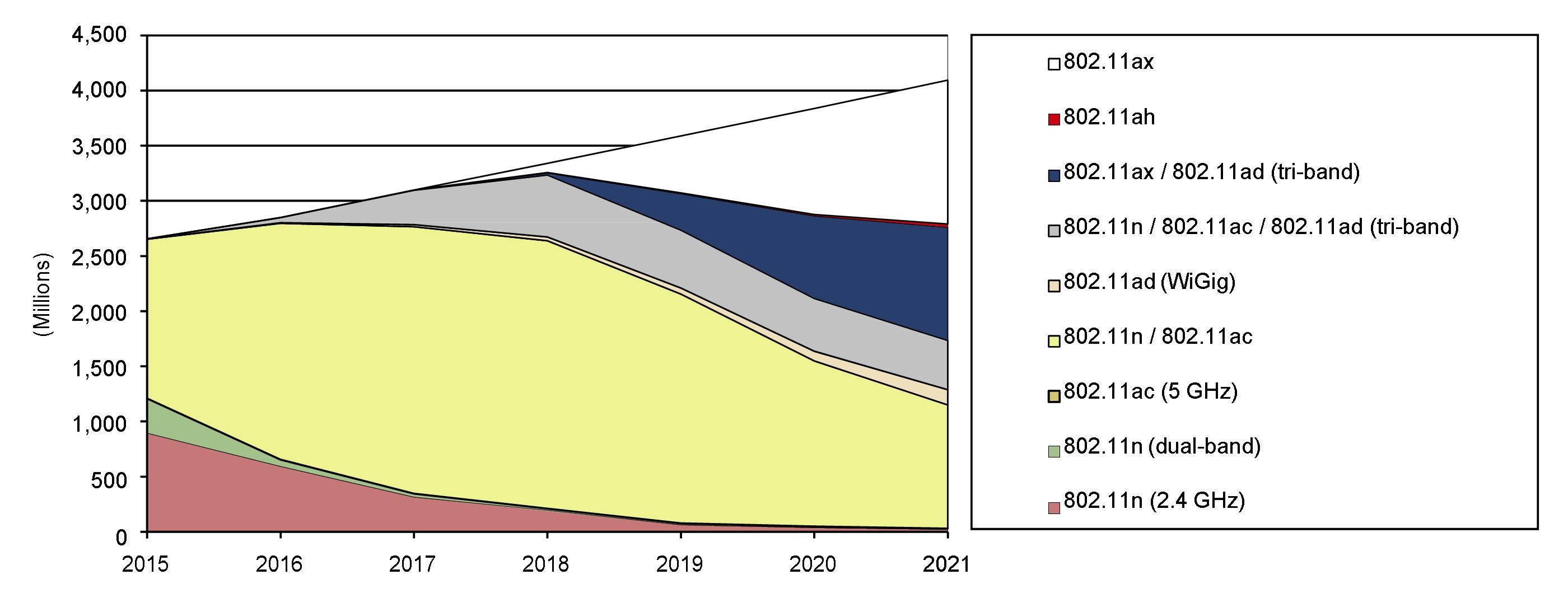The number of devices connected to the Internet of Things (IoT) is rapidly increasing, and showing no signs of slowing down. Of the many different communication standards used for IoT connectivity, Bluetooth and Wi-Fi are by far the most dominant. By 2020, These two technologies are forecast to connect 30 billion devices, with Wi-Fi taking the lead. But Wi-Fi isn’t just a simple standard. It comes in many flavors, which poses the challenge: how to design a Wi-Fi solution today that will facilitate the prevailing Wi-Fi standard in a few years? In this post, I will take look at some of the growing markets utilizing Wi-Fi, and what it takes to make a low-power, high-performance, future-proof Wi-Fi solution, and get it to the IoT market today.
Smart Homes, Smart Bodies: Expanding Usage of Wi-Fi in IoT
IoT devices are becoming increasingly personal, from Smart Cities, through Smart Homes to Smart People and Bodies. Wearable devices are becoming more and more ubiquitous, creating aggressive demands on light-weight, power-efficient, and, especially, low-cost components. Wearables are expected to grow at a compounded rate of 50% annually, making them the fastest ramping consumer technology, surpassing smartphones and tablets.
Another huge potential growth area is the Smart Home. Estimates of about 15 nodes per home in a current market of over 600 million homes equals more than 10 billion opportunities. The potential for Wi-Fi is enormous. Multi-room audio and video streami
ng, surveillance cameras and smart appliances are clearly a perfect fit for Wi-Fi as their main communication track. With exciting new devices, like these universal remotes that control everything but your kids, TV and OEM remote controls are becoming the biggest Wi-Fi markets in Smart Home.
This growth presents quite an opportunity for well-designed Wi-Fi enabled SoCs. In order to achieve a winning design, the solution must score highly in all the categories: low-power, high-performance, user-experience, fast time-to-market and low cost. But still, all this isn’t enough! With the complexity and fragmentation in the many Wi-Fi standards, a robust solution must also be able to predict the future, and support whichever standard becomes the forerunner.
Wi-Fi Complexity and Fragmentation
Wi-Fi is a complex standard. The standard is specified by IEEE 802.11 as a set of several implementations of media access control (MAC) and physical layer (PHY) for communication on various frequency bands. Older versions, like 802.11a, 802.11b and 802.11g are gradually becoming obsolete, while the now ubiquitous 802.11n is being improved upon for various new use-cases. New designs attempt to predict the future forerunner from the variety of 802.11ac, 802.11ad (WiGig), 802.11ah (HaLow), 802.11ax and others. As the format fragmentation expands, it becomes more difficult to decide which flavor to start with. A software approach can alleviate these concerns, by addressing several flavors and delaying the decision to go to full optimization.
Total Wi-Fi Chipset Shipments by Protocol (Source: ABI Research)
Another important factor is interoperability. A good design needs to be able to interact with third party solutions for the best user experience. This raises the issue of buggy implementations and limitations in the third party product. To address this, a flexible approach is necessary to handle bad behavior and implement software patches.
So, it’s clear that flexibility is important. Still, using a hardware solution does have its advantages. By tailoring the hardware to a specific standard, the modem can achieve the most efficient power usage and the best area. The flip side of this coin, however, is that there is no flexibility at all, and scaling is limited. In a software defined modem (SDM), area and power are slightly increased, but the levels of flexibility are very high, enabling several standard flavors to be supported. In early design stages, when uncertainty about the standard, this penalty becomes negligible compared to the flexibility it affords.
SDM Solution for Future-Proof Flexibility
In the realm of IoT, power is key. Especially in wearables and always-on devices. To address this, CEVA’s RivieraWaves Wi-Fi platforms support all of the protocol-level low power features, like the Wi-Fi multimedia power save (WMM-PS). In addition, our DSPs employ a variety of methods to minimize power consumption. To achieve efficient power gating, several power domains are used, so that most of the design can be switched off when in low power mode. To keep peak performance and user experience, wake-up time is reduced to a minimum by retaining a small amount of memory. Our friendly design also performs automatic clock gating at synthesis level. These features are what make our solution the industry’s smallest, most power-efficient Wi-Fi IP platforms.
Our solution also reduces integration complexity by providing a fully integrated sub-system. This enables simple and rapid integration into SoC, while facilitating freedom for evolution and differentiation. Our platforms are complete solutions including . For example, on a platform based on the CEVA-TeakLite-4, we can use the same architecture to support 802.11n, 802.11ac, 802.11ah (HaLow), 802.11ax (roadmap). By using the exact same MAC, only the PHY is replaced to switch between flavors. Our Wi-Fi SDM is also integrated in our CEVA-Dragonfly multi-mode communication solutions. In addition to Wi-Fi, the Dragonfly platforms support different wireless standards like 802.15.4g, Sigfox, LoRa, LTE Cat M, NB-IoT, GPS and more.
One Solid Solution for a Complex, Fragmented Obstacle
While we still do not possess the technology to predict the future, we can certainly maintain flexibility for a variety of possible scenarios. This is what makes using SDM Wi-Fi integration the smart choice for IoT. CEVA is the only IP company to provide turnkey solutions for all the different flavors. That, together with years of experience and very high adoption across the globe, make CEVA the obvious choice for a smart future.
To learn more about our Wi-Fi platforms:
- Download the presentation: “Wi-Fi for IoT: Overcoming Connectivity Standard Fragmentation Using a Software-Defined Modem”
- Register to our on-demand webinar: “Low Power Wi-Fi for IoT – Fast and Easy Design of Low Power Wi-Fi SoC for IoT”




